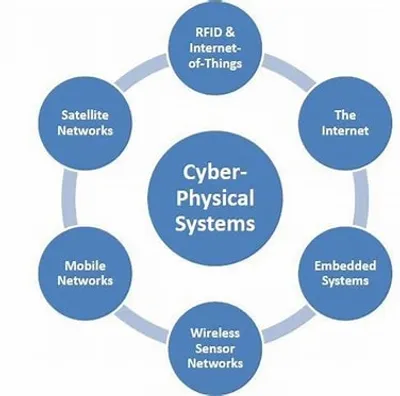
Cyber Physical Systems: Bridging Real and Virtual
Introduction to Cyber Physical Systems
Cyber Physical Systems (CPS) represent an integrative approach in the world of technology, where physical processes intermingle with digital computation to offer unprecedented capabilities. They mark the confluence of embedded systems, the Internet of Things (IoT), real-time analytics, and advanced control systems.
What Are Cyber Physical Systems?
In essence, CPS are engineered systems that are built from, and depend upon, the seamless integration of computational algorithms and physical components. These systems can interact with the human world in real-time, offering solutions that were previously unthinkable.
Key Components of CPS
- Sensors: Devices that collect data from the physical world, translating it into digital signals.
- Actuators: Devices that affect changes in the physical world based on digital instructions.
- Computational Units: These analyze the data and make decisions. Often, they are embedded systems.
- Networks: These facilitate communication between sensors, computational units, actuators, and possibly, other CPS or systems.
Importance in Today’s World
The implications of CPS in modern society are vast. They find applications in:
- Healthcare: Wearable health monitors, robotic surgeries, and personalized medicine.
- Transportation: Self-driving cars, traffic control, and smart public transit systems.
- Energy: Smart grids which adjust the production and distribution of energy in real-time.
- Manufacturing: Especially relevant to your major, Aditya, in smart manufacturing, CPS can optimize the production processes, reduce waste, and increase safety.
Future of CPS
The future holds exciting developments in the domain of CPS. With advancements in AI, machine learning, and increased computational capabilities, we can expect even more seamless integration of the physical and digital realms, leading to a world where technology becomes an even more intrinsic part of our daily lives.
Content of CPS Lab
Lab Experiment 1: TinkerCAD and Arduino UNO
Get acquainted with TinkerCAD’s interface and run a basic simulation using Arduino UNO.
Lab Experiment 2: NODE MCU esp8266 with DHT-11 Sensor
Learn to interface the NODE MCU esp8266 with the DHT-11 sensor and display temperature and humidity values on an HTML page.
Theory: Arduino Nano, Arduino UNO, and Raspberry Pi
Delve into the specifics of Arduino Nano, Arduino UNO, and Raspberry Pi, understanding their unique capabilities. Nano Datasheet, UNO Datasheet, Raspberry Pi Datasheet
Lab Experiment 3: Introduction to PostgreSQL
Familiarize yourself with PostgreSQL, learn to create databases and tables, and get an overview of SQL syntax and essential keywords.
Lab Experiment 4: Storing Sensor Data in Databases
Understand the methods to store sensor-generated data into databases, ensuring data integrity and accessibility.
Lab Experiment 5: Dive into Cloud Computing
Explore the basics of cloud computing, its applications, and the potential it holds for data storage and processing.
Conclusion
Cyber Physical Systems, by virtue of blending the tangible and intangible, promise a future where technology is not just an enabler but an active participant in decision-making processes, making our world smarter, safer, and more efficient.
